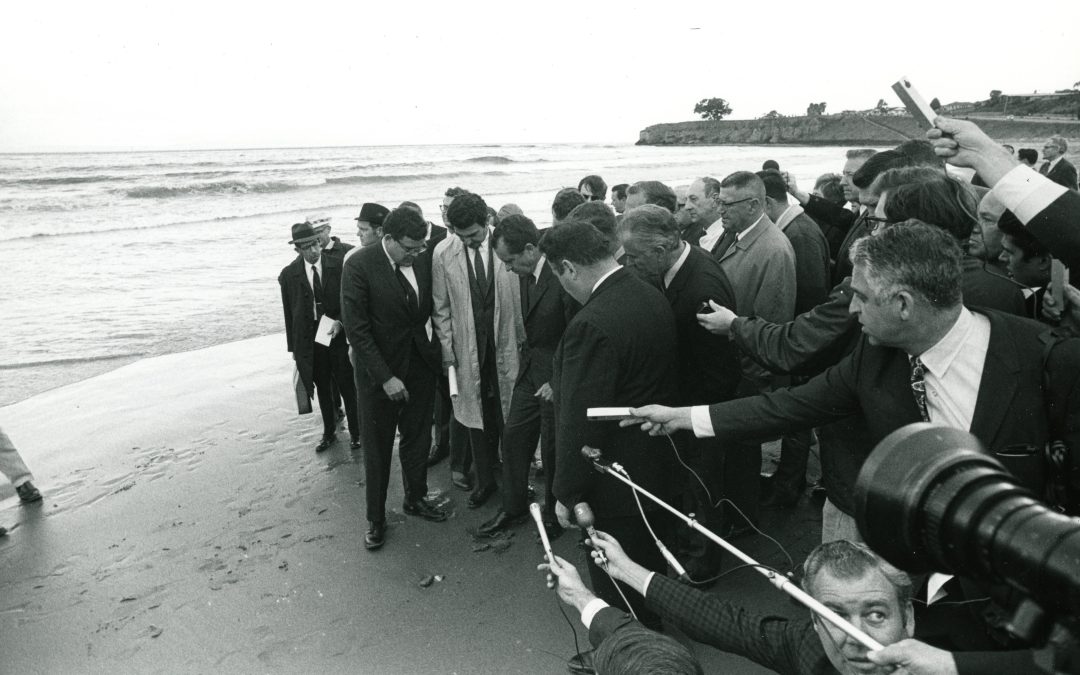In the first month of Richard Nixon’s presidency, an oil spill occurred off the coast of Santa Barbara, CA, placing an emphasis on the need for environmental legislation.
Bestselling author and presidential historian Douglas Brinkley came to the Nixon Library this week to discuss his latest book, Silent Spring Revolution: John F. Kennedy, Rachel Carson, Lyndon Johnson, Richard Nixon, and the Great Environmental Awakening.
Brinkley took guests back to the 1960s, chronicling the roots of the environmental movement that continues to impact Americans. He emphasized the bi-partisanship of environmentalism during the Long Sixties (1960-1973) with the example that the Endangered Species Act was passed with a vote of 92 to 0.
Highlighting the environmental achievements of the Nixon administration, Brinkley described landmark environmental legislation including the National Environmental Policy Act (NEPA), the creation of the Environmental Protection Agency (EPA) and National Oceanic and Atmospheric Administration (NOAA), the Clean Air Act, the Clean Water Act and the Endangered Species Act as “cornerstones of Nixon’s legacy that still matter today.”
Brinkley recognized the efforts and impact of President Nixon’s environmental policy advisors including John Ehrlichman, Russell Train and Bill Ruckelshaus. When ranking the environmental legacy of presidents, Brinkley stated, “I mentioned Theodore Roosevelt, FDR, now you are getting Nixon in this category of really important environmental presidents of the very top order.”
Watch the program:
Signed copies of Silent Spring Revolution are available for purchase in the Nixon Library Store.

